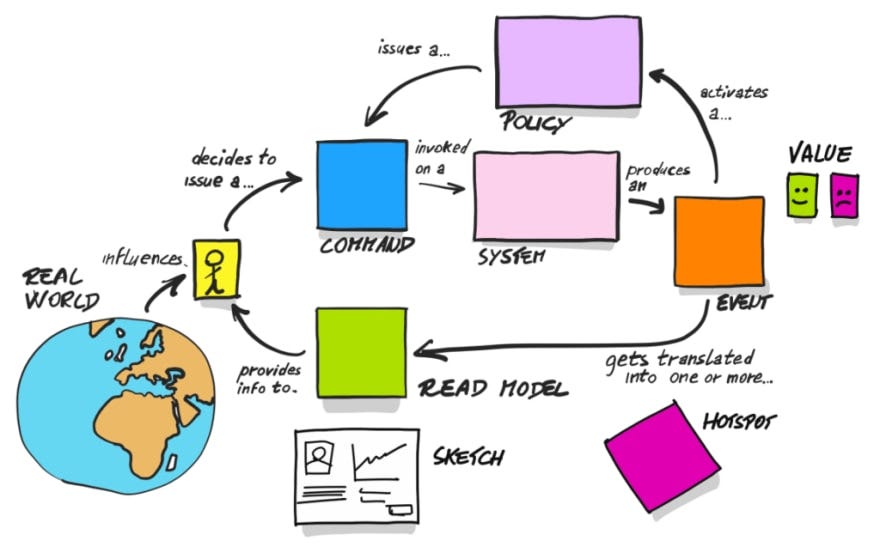Event Storming
Event Storming¶
Event Storming is a collaborative workshop technique used in Domain-Driven Design (DDD) to explore and understand complex business domains. It was introduced as a way to bring together stakeholders from different disciplines, such as domain experts, developers, testers, and business analysts, to gain a shared understanding of the domain and its processes. The primary goals of Event Storming are to accelerate learning, foster collaboration, and uncover domain insights that can inform the design of software systems.

Process of Event Storming¶
-
Preparation: Identify the scope and objectives of the Event Storming session, gather relevant stakeholders, and prepare the necessary materials, such as sticky notes, markers, and a large whiteboard or wall space.
-
Kickoff: Introduce the participants to the goals and rules of the Event Storming session. Encourage active participation, collaboration, and an open mindset towards exploring the domain.
-
Exploration: Facilitate the exploration of the domain by encouraging participants to identify events, work items, policies, and constraints related to the system. Use sticky notes to capture these elements and arrange them on the timeline to visualize the flow of events and actions.
-
Discussion and Refinement: Participants discuss what is found so far to clarify misunderstandings and refine the representation of domain concepts. Encourage stakeholders to share their perspectives, domain knowledge, and insights to enrich the understanding of the domain.
-
Synthesis: Gather the insights gained during the Event Storming session to identify patterns, trends, and areas of complexity within the domain. Use the outcomes of the session to inform the design of software systems, define bounded contexts, and prioritize development efforts.
-
Follow-up: Document the outcomes of the Event Storming session, including captured events, work items, policies, and constraints. Share the insights gained with relevant stakeholders.